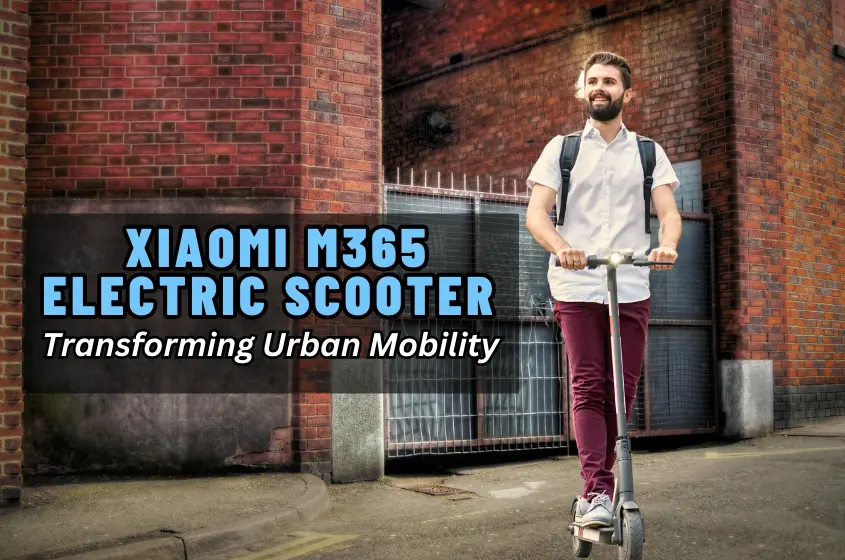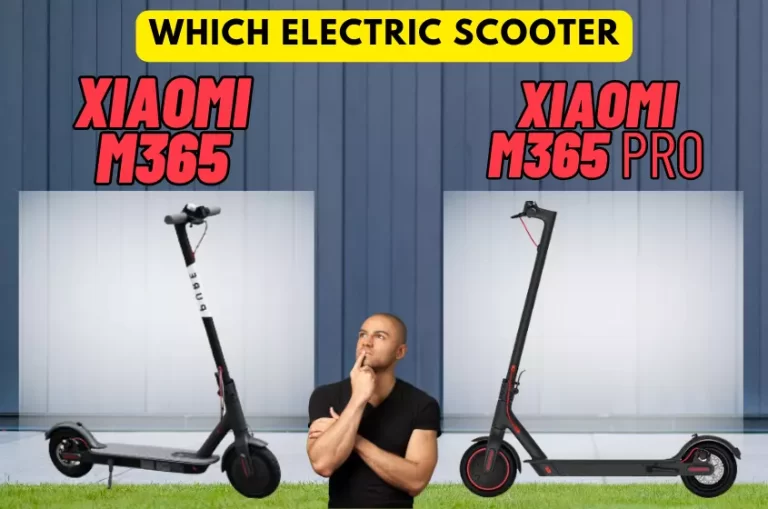Xiaomi M365 Electric Scooter: Transforming Urban Mobility
In recent years, urban mobility has undergone a profound transformation, driven by advancements in technology and a growing desire for sustainable transportation options. One notable player in this transformation is the Xiaomi M365 electric scooter, which has rapidly gained popularity around the world. This article delves into the substantial impact of the Xiaomi M365 on urban mobility, examining how this innovative device has reshaped the way people navigate cities and the broader implications for urban transportation.
The Rise of Electric Scooters: A Global Trend
Before diving into the specifics of the Xiaomi M365, it’s crucial to understand the broader context of electric scooters in urban transportation. Electric scooters, in general, have emerged as a convenient, eco-friendly, and affordable alternative for short-distance travel within cities. Their growth can be attributed to several key factors:
- Convenience: Electric scooters offer an incredibly convenient way to cover short distances. They are lightweight, easy to maneuver, and can be parked virtually anywhere, reducing the hassle of finding parking spots.
- Eco-Friendly: With an emphasis on sustainability, electric scooters produce zero emissions and help reduce air pollution in urban areas. They contribute to cleaner and greener cities.
- Cost-Effective: Compared to owning a car or using rideshare services, electric scooters are cost-effective. Users pay per ride, and there are no ongoing expenses like fuel or maintenance.
- First/Last-Mile Connectivity: Electric scooters bridge the gap in public transportation, providing an ideal solution for the first and last miles of a commute. This integration encourages more people to use public transit.
- Tech Integration: Many electric scooters, including the Xiaomi M365, come with smartphone apps that allow users to locate, unlock, and pay for their rides seamlessly.
Introducing Xiaomi M365: A Game-Changer in Urban Mobility
The Xiaomi M365 electric scooter has taken the urban transportation world by storm. Launched in 2017, this sleek and affordable scooter has become a symbol of the electric scooter revolution. Here’s how it has made a significant impact:
- Affordability: The Xiaomi M365 offers an attractive price point, making it accessible to a wide range of users. This affordability has democratized electric scooter ownership, allowing more people to embrace eco-friendly commuting.
- Range and Speed: With a range of up to 18.6 miles (30 km) on a single charge and a top speed of 15.5 mph (25 km/h), the Xiaomi M365 strikes a balance between practicality and performance, making it suitable for daily commuting.
- Portability: The foldable design of the Xiaomi M365 is a game-changer. It can be easily folded and carried onto public transportation or stored in small spaces, enhancing its convenience and versatility.
- App Integration: The Xiaomi Home app provides users with valuable features like GPS tracking, cruise control, and battery status monitoring. This integration enhances the user experience and adds a layer of convenience.
- Quality and Durability: Xiaomi is renowned for its commitment to quality, and the M365 is no exception. It boasts a robust build and reliable performance, ensuring a longer lifespan and better value for users.
Reducing Traffic Congestion: Xiaomi M365’s Role in Smoother Commutes
One of the most significant impacts of the Xiaomi M365 and electric scooters in general is their potential to reduce traffic congestion in urban areas. As more people opt for electric scooters for their daily commutes, there are fewer cars on the road during peak hours. This reduction in traffic congestion leads to several positive outcomes:
- Faster Commutes: With fewer cars on the road, traffic moves more smoothly and quickly, reducing commute times for everyone, including those who still rely on traditional vehicles.
- Lower Emissions: Reduced traffic congestion means fewer cars idling in traffic jams, which, in turn, lowers greenhouse gas emissions and air pollution. This is a significant step towards cleaner and healthier urban environments.
- Less Stress: Commuters experience less stress when they encounter less congestion on their way to work. Electric scooters offer a hassle-free and enjoyable alternative to sitting in traffic.
- Urban Planning: As the popularity of electric scooters grows, city planners are reevaluating urban infrastructure. More bike lanes, scooter parking, and charging stations are being integrated into city design to accommodate this new mode of transportation.
Enhancing Public Transit: Xiaomi M365’s Role in Seamless Multimodal Travel
Electric scooters, including the Xiaomi M365, have become a valuable extension of public transportation systems. They address the common “first and last-mile” challenge that many commuters face when using buses, trains, or subways. Here’s how they enhance public transit:
- Increased Accessibility: Electric scooters make public transit more accessible to a broader range of commuters, including those who live a bit further from transit stops.
- Complementary Mode: Users can seamlessly combine scooters with public transit, using them to reach transit stations and then again to complete their journeys from the stations to their destinations.
- Reduced Overcrowding: By encouraging scooter use for shorter distances, public transit systems experience reduced overcrowding during peak hours, resulting in a more pleasant experience for passengers.
- Multimodal Transportation: The Xiaomi M365 and similar scooters promote a multimodal approach to transportation, allowing commuters to choose the most efficient and convenient modes for each part of their journey.
Challenges and Regulations: Ensuring Safe and Equitable Use
While electric scooters like the Xiaomi M365 offer numerous benefits, they also pose challenges that cities must address:
- Safety Concerns: Accidents involving electric scooters have raised safety concerns. Helmets and proper rider education are essential, and some cities have implemented speed limits and restricted scooter usage on sidewalks.
- Parking and Clutter: Improperly parked scooters can clutter sidewalks and public spaces. Cities have responded by imposing regulations on scooter companies to ensure responsible parking and maintenance.
- Equity and Accessibility: Access to electric scooters must be equitable. Some cities are working to ensure that underserved communities have access to these convenient transportation options.
- Data and Privacy: As electric scooter usage generates vast amounts of data, cities need to establish data-sharing agreements with scooter companies while protecting user privacy.
The Future of Urban Mobility: Electric Scooters Leading the Way
In conclusion, the Xiaomi M365 electric scooter has had a profound impact on urban mobility by providing a convenient, eco-friendly, and cost-effective mode of transportation. It has helped reduce traffic congestion, enhance public transit, and reshape the way people move within cities. However, challenges related to safety, parking, and equity must be addressed as electric scooters continue to transform our urban landscapes. As we look to the future, it’s clear that electric scooters will remain a key player in the ongoing evolution of urban transportation.
Case Studies in Urban Mobility Transformation
To illustrate the real-world impact of electric scooters like the Xiaomi M365 on urban mobility, let’s explore a few case studies from cities around the world:
Case Study 1: Paris, France
In Paris, the introduction of electric scooters has significantly reduced the number of cars on the road during rush hours. This shift has led to a 10% reduction in overall traffic congestion in the city center, resulting in faster commutes and improved air quality. The city has also implemented strict parking regulations for scooter companies to minimize sidewalk clutter.
Case Study 2: Los Angeles, California
Los Angeles, known for its notorious traffic jams, has embraced electric scooters as a viable solution to its transportation challenges. Studies conducted by the University of California, Los Angeles (UCLA), have shown that scooter users are more likely to use public transit for longer journeys, reducing the strain on the city’s road infrastructure.
Case Study 3: Tel Aviv, Israel
Tel Aviv has seen a surge in electric scooter usage, and Ben-Gurion University researchers have conducted studies to evaluate the impact. The results indicate that scooter riders are less stressed during their commutes compared to car drivers, contributing to a more relaxed urban environment. The city has also invested in scooter-friendly infrastructure, such as dedicated lanes.
Case Study 4: Singapore
Singapore, known for its strict regulations, has found a balance between safety and scooter adoption. The National University of Singapore (NUS) conducted research that led to the development of an urban mobility plan that integrates electric scooters with public transit, reducing travel times and emissions.
These case studies provide concrete examples of how electric scooters like the Xiaomi M365 are reshaping urban mobility and improving the quality of life in cities worldwide.
Research Contributions from Universities
Universities and research institutions have played a significant role in studying the impact of electric scooters on urban mobility. Here are some noteworthy contributions:
- The Massachusetts Institute of Technology (MIT) conducted a study analyzing the potential reduction in greenhouse gas emissions if electric scooters were adopted on a larger scale in major U.S. cities.
- Stanford University conducted research on the safety aspects of electric scooters and proposed recommendations for improving rider safety through helmet use and dedicated scooter lanes.
- The University of Amsterdam conducted surveys to understand the travel behavior of electric scooter users, shedding light on how these devices fit into the broader urban transportation ecosystem.
- Harvard University explored the economic benefits of reduced traffic congestion brought about by electric scooters, including reduced fuel consumption and healthcare cost savings.
These research contributions underscore the importance of academic institutions in shaping urban mobility policies and practices in the age of electric scooters.







